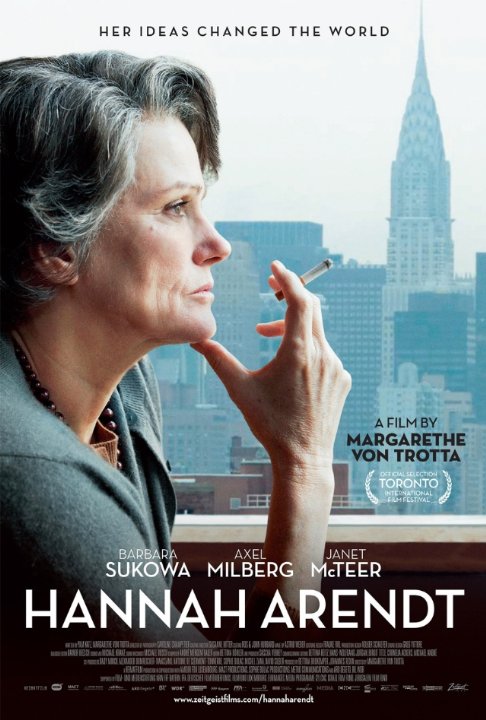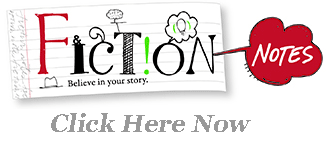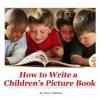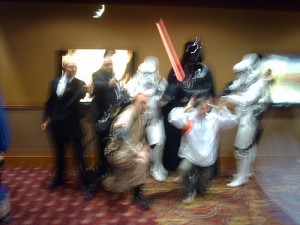There are several reasons when you should use a flashback, and many why you shouldn't.
http://www.helpingwritersbecomeauthors.com/reason-story-flashbacks/
Viewing: Blog Posts Tagged with: Free Library, Most Recent at Top [Help]
Results 1 - 16 of 16
Blog: Just the Facts, Ma'am (Login to Add to MyJacketFlap)
JacketFlap tags: flashback, Add a tag
Blog: Just the Facts, Ma'am (Login to Add to MyJacketFlap)
JacketFlap tags: flashback, Add a tag
If you have a flashback in your novel, it's better to not have it in your opening pages.
https://warriorwriters.wordpress.com/2016/06/15/are-flashbacks-fizzling-your-fiction-time-as-a-literary-device/
Blog: Just the Facts, Ma'am (Login to Add to MyJacketFlap)
JacketFlap tags: plot, flashback, Add a tag
You can play around with time in your story, but be careful not to confuse your reader.
https://warriorwriters.wordpress.com/2015/06/15/understanding-the-flashback-bending-time-as-a-literary-device/
Blog: A Chair, A Fireplace and A Tea Cozy (Login to Add to MyJacketFlap)
JacketFlap tags: flashback, reviews, Add a tag
A look back at what I reviewed in June 2012
Gilt
My Sister's Stalker
New Girl
Grave Mercy: His Fair Assassin, Book I (His Fair Assassin Trilogy)
Summer and the City: A Carrie Diaries Novel
Amazon Affiliate. If you click from here to Amazon and buy something, I receive a percentage of the purchase price.
© Elizabeth Burns of A Chair, A Fireplace & A Tea Cozy
Blog: OUPblog (Login to Add to MyJacketFlap)
JacketFlap tags: Law, Journals, flashback, pil, existentialism, *Featured, TV & Film, hannah arendt, eichmann, eichmann’s, oxford journals, adolf eichmann, crimes against humanity, public international law, international criminal justice, international criminal law, Roberta Seret, Banality of Evil, JICJ, Journal of International Criminal Justice, Margarethe von Trotta, Martin Heidegger, arendt’s, arendt, trotta, heidegger, Add a tag
Film is a powerful tool for teaching international criminal law and increasing public awareness and sensitivity about the underlying crimes. Roberta Seret, President and Founder of the NGO at the United Nations, International Cinema Education, has identified four films relevant to the broader purposes and values of international criminal justice and over the coming weeks she will write a short piece explaining the connections as part of a mini-series. This is the second one, , following The Act of Killing.

By Roberta Seret
The powerful biographical film, Hannah Arendt, focuses on Arendt’s historical coverage of Adolf Eichmann’s trial in 1961 and the genocide of six million Jews. But sharing center stage is Arendt’s philosophical concept: what is thinking?
German director, Margarethe von Trotta, begins her riveting film with a short silent scene — Mossad’s abduction of Adolf Eichmann in Buenos Aires, the ex-Nazi chief of the Gestapo section for Jewish Affairs. Eichmann was in charge of deportation of Jews from all European countries to concentration camps.
Margarethe von Trotta’s and Pam Katz’s brilliant screen script is written in a literary style that covers a four-year “slice of life” in Hannah Arendt’s world. The director invites us into this stage by introducing us to Arendt (played by award-winning actress Barbara Sukova), her friends, her husband, colleagues, and students.
As we listen to their conversations, we realize that we will bear witness not only to Eichmann’s trial, but to Hannah Arendt’s controversial words and thoughts. We get multiple points of view about the international polemic she has caused in her coverage of Eichmann. And we are asked to judge as she formulates her political and philosophical theories.
Director von Trotta continues her literary approach to cinema by using flashbacks that take us to the beginning of Arendt’s university days in Marburg, Germany. She is a Philosophy major, studying with Professor Martin Heidegger. He is the famous Father of Existentialism. Hannah Arendt becomes his ardent student and lover. In the first flashback, we see a young Arendt, at first shy and then assertive, as she approaches the famous philosopher. “Please, teach me to think.” He answers, “Thinking is a lonely business.” His smile asks her if she is strong enough for such a journey.
“Learn not what to think, but how to think,” wrote Plato, and Arendt learns quickly. “Thinking is a conversation between me and myself,” she espouses.
Arendt learned to be an Existentialist. She proposed herself to become Heidegger’s private student just as she solicited herself to cover the Eichmann trial for The New Yorker. Every flashback in the film is weaved into a precise place, as if the director is Ariadne and at the center of the web is Heidegger and Arendt. From flashback to flashback, we witness the exertion Heidegger has on his student. As a father figure, Heidegger forms her; he teaches her the passion of thinking, a journey that lasts her entire life.
Throughout the film, in the trial room, in the pressroom, in Arendt’s Riverside Drive apartment, we see her thinking and smoking. The director has taken the intangible process of thinking and made it tangible. The cigarette becomes the reed for Arendt’s thoughts. After several scenes, we the spectator, begin to think with the protagonist and we want to follow her thought process despite the smoke screen.
When Arendt studies Eichmann in his glass cell in the courtroom, she studies him obsessively as if she were a scientist staring through a microscope at a lethal cancer cell on a glass slide. She is struck by what she sees in front of her – an ordinary man who is not intelligent, who cannot think for himself. He is merely the instrument of a horrific society. She must have been thinking of what Heidegger taught her – we create ourselves. We define ourselves by our actions. Eichmann’s actions as Nazi chief created him; his actions created crimes against humanity.
The director shows us many sides of Arendt’s character: curious, courageous, brilliant, seductive, and wary, but above all, she is a Philosopher. Eichmann’s trial became inspiration for her philosophical legacy, the Banality of Evil: All men have within them the power to be evil. Man’s absence of common sense, his absence of thinking, can result in barbarous acts. She concludes at the end of the film in a form of summation speech, “This inability to think created the possibility for many ordinary men to commit evil deeds on a gigantic scale, the like of which had never been seen before.”
And Eichmann, his summation defense? It is presented to us by Willem Sassen, Dutch Fascist and former member of the SS, who had a second career in Argentina as a journalist. In 1956 he asked Eichmann if he was sorry for what he had done as part of the Nazis’ Final Solution.
Eichmann responded, “Yes, I am sorry for one thing, and that is I was not hard enough, that I did not fight those damned interventionists enough, and now you see the result: the creation of the state of Israel and the re-emergence of the Jewish people there.”
The horrific acts of the Nazis speak for themselves. Director von Trotta in this masterpiece film has stimulated us to think again about genocide and crimes against humanity, their place in history as well as in today’s world.
, Roberta has written a longer ‘roadmap’ to Margarethe von Trotta’s film on Hannah Arendt. To learn more about this new subsection for reviewers or literature, film, art projects or installations, read her extension at the end of this editorial.Roberta Seret is the President and Founder of International Cinema Education, an NGO based at the United Nations. Roberta is the Director of Professional English at the United Nations with the United Nations Hospitality Committee where she teaches English language, literature and business to diplomats. In the Journal of International Criminal Justice
The Journal of International Criminal Justice aims to promote a profound collective reflection on the new problems facing international law. Established by a group of distinguished criminal lawyers and international lawyers, the journal addresses the major problems of justice from the angle of law, jurisprudence, criminology, penal philosophy, and the history of international judicial institutions.
Oxford University Press is a leading publisher in international law, including the Max Planck Encyclopedia of Public International Law, latest titles from thought leaders in the field, and a wide range of law journals and online products. We publish original works across key areas of study, from humanitarian to international economic to environmental law, developing outstanding resources to support students, scholars, and practitioners worldwide. For the latest news, commentary, and insights follow the International Law team on Twitter @OUPIntLaw.
Subscribe to the OUPblog via email or RSS.
Subscribe to only law articles on the OUPblog via email or RSS.
The post Hannah Arendt and crimes against humanity appeared first on OUPblog.
Blog: de Helen's bits (Login to Add to MyJacketFlap)
JacketFlap tags: Save the Cat, Style formats, writing, flashback, cortisol, Add a tag
Yesterday went fairly well, once I spent an hour completely screwing up my Style format that I had set up to write my new play. I should never try to do technical work before I have my tea. So I stopped that and had my tea while answering email, reading Twitter, looking at FaceBook, reading NYtimes.com, and so on. When I finally returned to my play, thinking I would format it old school, Word wouldn't let me. My format was so screwed up, I couldn't write at all. Copy and move to a new blank document? that doesn't work in Word.
Only one thing to do. Learn how to fix what I had broken. Well, that took another two hours out of my day. Not to mention how many more gray hairs I sprouted, and cortisol hormones I sprayed throughout my body. Probably took a few years off my life as well. But, I did learn how to properly create Style formats! Still, it was 5pm by then, and I decided it was time for lunch. After that I might as well just hang it up for the day.
I didn't though. I kept going, and actually managed to produce some pages. Enough to realize that while I had been busy recruiting actors for the table read I have already committed to on October 4th (oh be quiet, I'll have a draft by then, I will!), I don't seem to have outlined any scenes onstage for one of the actors I have cast. Hm. In my mind, he's an important character. In the outline, he's never onstage. Ruh roh. I foresee a change acoming. Either on the page, or I have to cancel an actor that I really like. It has to be on the page. I like the balance of characters with him on the page. How to get him there? flashback? or do we have to visit him in the Pen? that's no fun. Looks like a flashback scene is coming up. This should be fun. Oh! Put that in the fun and games section! Thank you, Save the Cat!
Blog: TWENTY TEN Bridget Whelan (Login to Add to MyJacketFlap)
JacketFlap tags: Arditti, Zola, flashback, Add a tag
By the way, I would recommend every last word ever written by Zola and at the beginning of his novel Lourdes there is a perfect example of flashback.Closing this novel after reading the last page, one briefly believes in miracles, at least of the human redemption kind.
The opening scene is a crowded train of pilgrims en route to Lourdes and a priest reflects on why each of the passengers are making the journey - in essence an introduction to the main characters. The back stories are rich in detail but we never forget that we are rattling through the French countryside because every so often the priest's thoughts are interrupted: someone knocks against him, there's a train announcement, he is offered refreshment...so we have a perfect balance between the flashbacks and the 'now' of the story.
Read it if you want to see how flashbacks should be done.
Blog: Musings of a Novelista (Login to Add to MyJacketFlap)
JacketFlap tags: Flashback, Life & Culture, Friday Flashback, Add a tag
It’s time for the December edition of Flashback Friday where I share events from my own life during my kid and teen years.
One of the holiday traditions for me was participating in some sort of Nutcracker production. I took ballet for about 10 years until I was 16 — this is when I figured out that I didn’t have the body or the talent to be a prima ballerina.
One of my favorite memories was when I was 11 years old and our dance school had the prestigious honor of dancing with The Atlanta Ballet Company’s rendition of The Nutcracker.
Dear Diary:
So Becky wasn’t lying when she said that Ms. Leopald was going to cast us for roles today. Lisa got cast as a Rat. Perfect role for her. She’ll have to wear this awful furry costume and roll around on the floor. This is what she gets for being such a Grinch (and it’s not even Christmas yet). Donna got cast as a Solider — which was a little better but she won’t dance much and she can’t smile because Soliders Are Serious.
Sooo…guess what? Guess what I am???
Hint: I’m not a Rat and I’m not a Solider.
Give up yet?
I’m an ANGEL!!!!!!!!!!!!!!!!
I’m the TALLEST in my class so I got moved with the HIGH SCHOOL girls. I get to actually dance in both acts and I get to rehearse with the Atlanta Ballet dancers.
And the best part? I get to wear GLITTER.
 Yeah, let’s talk about that glitter for a second shall we? I had to put it in my hair on my face, shoulders — it was EVERYWHERE. By the end of it all, I was glitter-traumatized. Now when I see glitter, I kinda cringe.
Yeah, let’s talk about that glitter for a second shall we? I had to put it in my hair on my face, shoulders — it was EVERYWHERE. By the end of it all, I was glitter-traumatized. Now when I see glitter, I kinda cringe.
I searched for an Angel picture but couldn’t find any, which is too bad because the costume was really beautiful as I remember it — glitter and all. I did find a picture that I took for a Nutcracker Suite production when I was 13 years old. I danced in The Waltz of the Flowers — to this day it is one of my favorite Tchaikovsky Nutcracker compositions. I remember our dance mistress decided to have each girl be a different color. Looks like I was the blue flower. :)
Blog: Musings of a Novelista (Login to Add to MyJacketFlap)
JacketFlap tags: Flashback, Life & Culture, Flashback Friday, Add a tag
It’s time for the November edition of Flashback Friday where I share events from my own life during my kid and teen years.
For this installment I thought I would just embarrass myself by posting some of my break-up poems. Did you ever write those? Break-ups in high school were so *dramatic* — the end of the world and being the budding writer that I was — I had to immortalize my pain in the form of bad poetry. Here are two poems that I wrote to two boys after they broke my heart:
Untitled (10th grade)
Out of your life
I’m gone without a trace
No hugs or kisses good-bye
Not even a warm embrace
Out of your life
I fade into the sunset
No pictures or sweet memories
Not even a slight regret
Out of your life
I leave and you do not resist
No questions or a reason why
Not even to ask if I still exist.
Memory (11th grade)
Days When I
Think of
you.
How deep I
exist in
Thoughts.
Aspirations and
Dreams in my
Mind.
Wishes that go
Unfullfilled
And wilt.
Memory and dust
Become
My existence.
Time will bury
Me beyond
Recognition.
Living dead
With heart
Still beating.
I still cringe knowing that I slipped these poems into the lockers of those boys.
With the 11th grade break-up poem I tried to get the janitor to open up my ex-boyfriend’s locker so I could retrieve it — this was right after lunch when I found out that his new girlfriend had access — oh, it was so humiliating! She was also in my Spanish 102 class and made it a living hell when she passed the poem around to her friends. Yeah, good times. And no, I’m not still bitter. Not at all. Ha.
It just proves when you’re young and heart-broken, you can do (and write) some dumb things.
Blog: KinderScares (Login to Add to MyJacketFlap)
JacketFlap tags: pictures, flashback, photo contest, halloween 2010, halloween, Add a tag

Blog: Through The Tollbooth (Login to Add to MyJacketFlap)
JacketFlap tags: novel writing, flashback, janet fox, historical ya, Add a tag
“I’d recommend to other writers to see if story elements can be slipped into flashback, and whether the story has better forward momentum as a result.”
Q: Janet, reading Faithful gives you a great look at early Yellowstone Park through Maggie’s eyes. Maggie is both in awe of Yellowstone’s beauty and afraid of its dangers, many of which she has to face head on. Can you talk about the writer’s process of pitting a character against nature? How did you find the balance between adventure and realism, given that Maggie is pretty much a greenhorn and just sixteen?
“I was writing about how I feel about Yellowstone and transferring that to Maggie. The Park has actually changed very little since her time – better roads and hotels, yes, but that raw nature is still there. It’s our own American landscape, unique to this country, and I drew upon the feeling of awe that anyone, whether in 1900 or 2010, would feel upon entering the Park.
“I think for Maggie her conflict with nature rises out of her loss – her mother’s disappearance by, perhaps, drowning in the ocean.
Add a CommentBlog: Darcy Pattison's Revision Notes (Login to Add to MyJacketFlap)
JacketFlap tags: flashback, backstory, gail carson levine, how to write, novel revision, writer, author, novel, Add a tag
In a recent post, Gail Carson Levine discusses how to get background material into a story without the use of a flashback scene,
along with tips for when you do use a flashback.
Weaving in Backstory
Poem. She points out that in her story, The Two Princesses of Bamarre, she uses an epic poem: everyone knows the poem, quotes from it at times, or even perform parts of it.
Newspaper clippings. Levine also points to The Blind Assassin by Margaret Atwood, which uses newspaper clippings to introduce backstory.
Dialogue in a counseling session. Of course, a character could spill the beans during a session with a counselor.
 Sometimes, I’ve heard the opinion, though, that these “techniques” are cheats of sorts, ways to work in material that doesn’t really belong. A story should start in one place and pretty much progress linearly. Using backstory is like this picture of tattoos on a woman’s back: for her, there’s no easy way to SEE these tattoos (mirrors, photo, description), it’s unnatural for her to visualize them.
Sometimes, I’ve heard the opinion, though, that these “techniques” are cheats of sorts, ways to work in material that doesn’t really belong. A story should start in one place and pretty much progress linearly. Using backstory is like this picture of tattoos on a woman’s back: for her, there’s no easy way to SEE these tattoos (mirrors, photo, description), it’s unnatural for her to visualize them.
A bold opinion, that backstory is a cheat — there are certainly shades of this.
Do you think backstory techniques like this are effective, or do they feel like cheats? When are they effective? Do you like prologues as a way to introduce backstory? What’s your favorite way to deal with backstory?
 Visit Our EBOOK STORE! |  How to Write a Picture Book. Ebook, immediate download. $10. How to Write a Picture Book. Ebook, immediate download. $10. |
Blog: Darcy Pattison's Revision Notes (Login to Add to MyJacketFlap)
JacketFlap tags: write a novel, how to create, character, characters, characterization, flashback, Darcy Pattison, revise, Add a tag
4 Stages of Character Development
When you write a first draft, there are really two novels at that point. There’s the one on the paper and there’s the one in your head and they are not the same.
I know this. But I’m experiencing it again as I’m working through this revision. In order to put on paper what is in my head, I’ve had to pay attention to feedback.

Blurry Characters
http://www.flickr.com/photos/hugovk/217155496/
Blurry Characters. My first feedback told me that my characters weren’t understood. Readers didn’t understand motivations or relationships. I worked on that by checking each scene to make sure the characters were active and the scenes goals were clear. Sometimes, I found that my main character was just an observer and had to give him a more active role. But usually, this did little to help.
Confusing Characters. The second round of feedback told me the same thing: my readers were confused. Here’s the problem: I thought that readers would understand relationships from implications in the text. But that was making them work too hard; they lost confidence in my storytelling. I realized that I had to lay it all out there, in other words, put it on the page.
Now, this does NOT mean that I put in the whole kitchen sink. No. I didn’t want to overwhelm readers with backstory. But naming a relationship was OK: “she’s my almost-adoptive-mother.” The reader still doesn’t know all of what that “almost” means but at least there’s now a frame of reference.
For the secondary character, I added a tiny bit of flashback, only 3-4 lines. It’s active, unusual, with good segues in and out of it. I almost want to take it out, because I don’t like backstory in the first chapter. But I think it’s crucial for the reader to understand the nature of what this character faces.
Deeper Characters. Finally, this third time around, my reader says my characters are deeper, motivations are clear and I’ve created great sympathy for the characters’ plight. Now, I’m just inconsistent.
Inconsistent Characters. My job on the next pass was to make sure the characters’ voices stayed consistent, the characters didn’t do or say anything that was out of character for their age or situation, and that the story itself remained consistent in tone and voice.
Exactly What I Envisioned. Well, almost, anyway. Nothing is set in stone yet, but I’m pretty pleased with how these characters are behaving right now. Pleased enough to move on and not bother my readers with this section again, but wait until there’s a whole revised novel to read.
Do your characters progress through similar stages? Blurry, confusing, deeper, inconsistent, exactly what I envisioned. Notice what was needed at each point: feedback. I only knew how well I was doing by checking in with a reader. Sometimes, especially in the early chapters, I need several rounds of feedback with my readers to make sure I’m making the needed changes. Now, with these chapters as my benchmark, I’m hoping to progress without so much feedback.
How would you describe your character’s progression through drafts? What feeds your revision cycle?
Related posts:
Blog: Ypulse (Login to Add to MyJacketFlap)
JacketFlap tags: Book Publishing, Flashback, Add a tag
 I Capture the Castle isn't a young adult book per se, at least not as we now generally define the genre. Those categories really didn't exist in 1948 when it was written. However, it certainly has all the makings of a great young adult... Read the rest of this post
I Capture the Castle isn't a young adult book per se, at least not as we now generally define the genre. Those categories really didn't exist in 1948 when it was written. However, it certainly has all the makings of a great young adult... Read the rest of this post
Blog: Plot Whisperer for Writers and Readers (Login to Add to MyJacketFlap)
JacketFlap tags: Flashback, plot threads, prologue, prologue, Flashback, plot threads, Add a tag
Question:
HI Martha!
I've been reading all the information available on Flashback and why it may not be the recommended route to begin a novel. Then I suddenly realized, by golly, this isn't a flashback, it's a prologue! My story starts back in history to provide a backdrop for the current story. My question ... how to you plot a prologue when it's the first "scene" in your book? Is it a chapter unto itself called Prologue? Can it be scene 1 in Chapter 1?
Thanks so very much!
Writing in North Carolina,
Nancy
Answer:
Dear Nancy,
The Prologue is a chapter unto itself, comes first, and is generally very short -- 2 to 3 pages. Chapter One follows the Prologue.
Or, you could make it scene 1 in Chapter 1.
The pros of one are the cons of the other, and visa versa.
For instance, readers sometimes ignore the Prologue. Changes in time right off the bat can confuse readers.
Best way to plot this first "scene", be it the Prologue or Chapter One is to make sure the scene introduces one or more of the three major plot lines -- dramatic action, character emotional development, or most likely, provide thematic significance and foreshadow what is to come.
I'll put out a request to some of my writer friends for more input and their take on the issue.
Hope this helps.
Great good luck with your project. Let me know how it goes.
Sincerely,
Martha
Blog: SnarkSpot (Login to Add to MyJacketFlap)
JacketFlap tags: Scary Lady Writers Who Scare Me, Free Library, Book Festival, Add a tag
I'm back!
And I am thrilled to invite everyone in the Philadelphia area to attend the first annual Philadelphia Book Festival this weekend, rain or shine, on the Benjamin Franklin Parkway, from 11 to 7 p.m..
The Free Library of Philadelphia has gathered an astonishing array of authors for the weekend.
You got your highbrow (Gary Shteyngart!) Your popular (Mary Higgins Clark!) Your locals (John Grogan! Mark Bowden! Karen Quinones Miller!) Your serious ladies of letters! (Francine Prose, who scares me!) Your groundbreaking African-American authors (Terry McMillan!) Your YA superstars! (Donna Jo Napoli, R.L. Stine!) Your hot young author everybody's talking about (Mohsin Hamid, who was in a creative writing class with me in college, although I'll bet he doesn't remember, and if he does, will probably totally deny it!)
You can find the entire lineup here, but trust me, there's something for everyone, including Curious George for the kids, at noon on Sunday.
I was lucky enough to be asked to moderate a panel on women and memoir featuring Elizabeth Gilbert (EAT, PRAY, LOVE), Darcy Steinke (EASTER EVERYWHERE) and Julie Powell (JULIE & JULIA: 365 DAYS, 524 RECIPES, 1 TINY APARTMENT KITCHEN). I've enjoyed all the books. They made me regretful, envious and hungry (sometimes, all three at once!), and it should be a great event. Check it out at 2 p.m. Sunday on the main stage.







So cute! I took a ballet class when I was 3 and quit soon after. My teacher was too hard on me and made me hate ballet. :( But I got back into dance when I was 10 and took tap and jazz classes up until I graduated from high school. I really loved it!
I love this flashback series. It’s making me want to look at my old diaries and photos.
Oh my gawd, this is so sweet! What a great idea. Love your voice even then.
@Ghenet: Aw, that’s too bad your ballet teacher was hard on you. But I’m glad that you took up jazz. Dancing was such a big part of my life growing up.
@Vicky: Ha, when I was that age, I didn’t hold back my opinions of people. At least not in my diary. :)
that is so cool and you were a tall 13 year old which makes me curious – just how tall are you now?
@Joanna: Ah, this is the beauty of the situation. I’m only 5’2 and some change now. After age 11, I didn’t grow another inch! :)